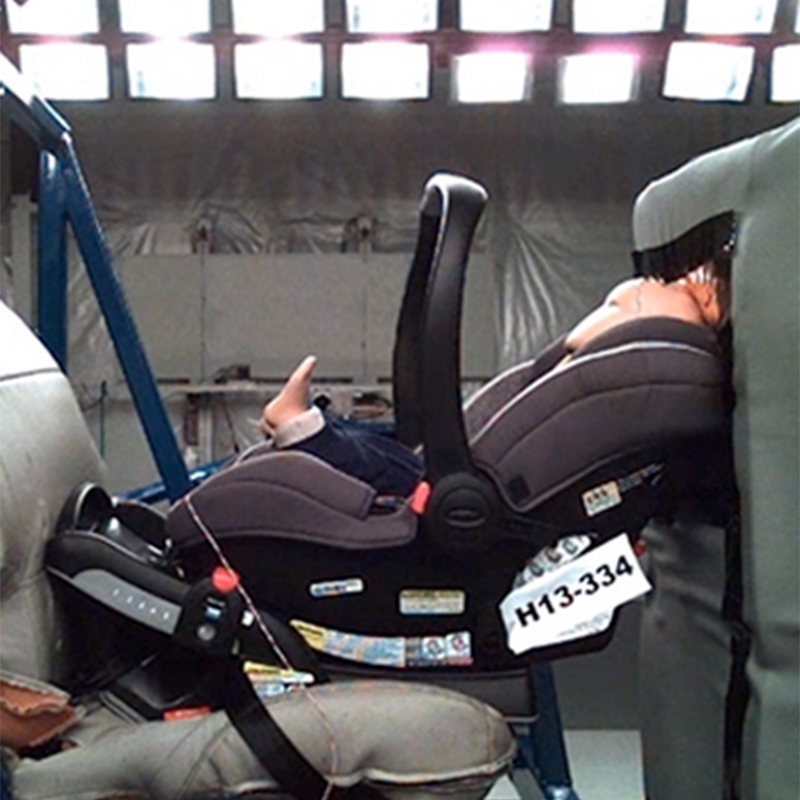- Study Says Most Parents Don’t Use Car Seats In Ride Share Vehicles Like Uber
- This 12-Year-Old Boy Is A Sophomore Aerospace Engineering Major!
- Fire Safety Experts Warn Of Hand Sanitizer Danger After A Mom and Kids Escape House Fire
- Recall Alert: Peaches May Be The Cause Of Salmonella Outbreak, 68 People Ill
- Summer Vacation In The Days Of COVID: Tips To Stay Safe
- How To Safely Grocery Shop During The Coronavirus Pandemic
- Michigan Teen With Vape-Related Illness Undergoes Double Lung Transplant
- Teen Kicks Off Anti-Vaping Campaign From Hospital Bed
- Teenager Receives Life Sentence For Strangling Sister To Death Over A Wi-Fi Password
- Toddler Falls To Death From 11th Deck of Cruise Ship
Oregon Police Crack Down On Car Seat And Seat Belt Use


Oregon State Police have began expanding their normal seat belt blitz to cover child car seats over the Labor Day weekend.
According to Sergeant Jeff Proulx, children under 40 pounds and 4 years old must be in a child safety seat.
Now, thanks to a new Oregon law, children under two years old need to be rear-facing. For those over 40 pounds and under four-foot-nine, a booster seat is required.
“Children don’t have the option, they don’t get the choice necessarily,” Sgt. Proulx said. “If you educate your child at a young age, they hopefully wear their seat belt every time they get in a car.”
Drivers caught breaking the car seat laws will either receive a warning or citation. According to OSP, most drivers in Jackson county do wear seat belts with a 90-percent compliance rate.
The Oregon Governor, Kate Brown, recently signed a critical health and safety bill into law which protects children – by requiring children under age 2 to ride in rear-facing car seats.
Oregon is now the sixth state in the country to raise car seat standards to align with recommendations from the American Academy of Pediatrics.
Oregon state Rep. Sheri Malstrom was the chief legislative sponsor of the bill.
“As a public health nurse, I’ve talked with thousands of parents about the life-saving difference the right car seat can make,” Malstrom said. “Putting more children in rear-facing car seats will prevent serious injuries and save lives. It’s critical that we continue educating Oregonians about the positive impact this change will have for children and their families.”
Research shows that children under the age of 2 are five times less likely to suffer injuries or death when using a rear-facing car seat compared to a forward-facing one.
When a car seat is used properly, rear-facing car seats reduce children’s injury risk by more evenly distributing impact forces during a crash.
Car crashes are one of the leading causes of death for children.
Here are 9 safety points to consider about the safety of your child’s car seat:
- There are 3 types of car seats – rear-facing, forward-facing and booster. When buying a car seat, you need to buy the seat which is appropriate for your child’s age. Read the labels on the car seat and look for the height, weight and age limits to make sure it’s the correct choice for your child.
- There is no real evidence that car seats “expire” however it is evident that parts of a car seat can wear away or perish, so it’s recommended that you steer clear of car seats that are older than 5 years. You should also avoid borrowing a used seat or second-hand stores where you do not know the previous owner and the complete history of the car seat. The seat may have missing parts or instructions or it may have been involved in a crash or even recalled. There is no sure way to be safe in these instances.
- An important feature to look out for when buying a car seat is head and side impact protection. The foam sides encompass the child’s head, cushioning and protecting them from the dangerous force and impact during an accident.
- The back seat is the best and safest place for all children under the age of 13 to sit and also to place a car seat. You need to consult the owner’s manual of your car, to see the possible options for placing the seat, also taking into account the safety of other passengers in your vehicle.
- Take cognizance of the most common fitting problems and make sure that your child’s seat is free of these problems:
- Loose harnesses
- Twisted seatbelts
- Harness straps sitting incorrectly when child is buckled in
- Not all Isofix points connected
If you are having problems with the installation or concerned about the car seat safety, there are CPS technicians who will assist you in ensuring your child’s seat is properly in place. Also view our article on car seat installation
- Never put your child in a car seat with a jacket on, as the bulky fabric can prevent the car seat straps from sitting correctly around your child’s body. The extra slack in the harness means that your child won’t be completely contained in the event of an impact. If it’s cold, rather put a blanket over your child after strapping them in.
- When it comes to car seat safety, it’s smart to delay changing your child’s current seat until they reach the maximum weight or height listed on the label. It is also recommended that children should ride in a rear-facing seat until they are at least 2 years old. The reason for this is that should you be involved in a frontal collision, the rear-facing car seat allows for the child’s head, neck, and spine to move evenly into the seat and not away from it.
- Once a child is over 2 years old and has outgrown a rear-facing car seat, they should sit in a forward-facing car seat with a 5-point harness until they reach the highest height or weight allowed in the seat. Once they outgrow their forward-facing car seat, the booster seat is the next step.
- It’s also best to delay the move to a booster seat until a child reaches the highest weight or height limit of the car seat. Booster seats come with lap and shoulder belt or a seat belt alone, which is a lot less protection than when you keep your child forward-facing in a harness.
- When your child outgrows his or her car seat, you may give it away if it hasn’t been involved in a car crash, has all the instructions and original parts and you have the age and history of the car seat. If the seat is older than the recommended 5-year-period, you will need to dispose of it by taking it apart and putting the pieces in separate dark garbage bags so that nobody can find and reuse the seat.










0 comments